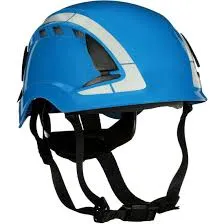Childrens Safety Helmets for Outdoor Activities and Sports Safety
The Importance of Safety Helmets for Children
In today's world, child safety is a paramount concern for parents and guardians. As children explore their surroundings, engage in outdoor activities, and participate in sports, the potential for accidents increases. One of the crucial safety measures that can be taken to protect children during these activities is the use of safety helmets. This article delves into the significance of safety helmets for children, the various types available, and tips for ensuring proper use.
Why Are Safety Helmets Essential?
Safety helmets are designed to protect the head from injuries caused by impact. Children, especially those aged 1-14 years, are often involved in activities such as cycling, skateboarding, rollerblading, and playing sports. According to the Centers for Disease Control and Prevention (CDC), injuries resulting from falls are among the leading causes of emergency room visits for children. Many of these injuries can be prevented by wearing a properly fitted safety helmet.
Wearing a helmet significantly reduces the risk of head injuries. Studies show that helmets can decrease the risk of head injury by up to 85%. In addition to physical protection, wearing a helmet also instills a sense of safety and encourages children to participate in various activities more confidently.
Types of Safety Helmets for Children
When it comes to child safety helmets, there are numerous options tailored for different activities. The most common types include
1. Bicycle Helmets Specifically designed to protect cyclists, these helmets are lightweight and well-ventilated. They cover the forehead, back of the head, and sides, providing comprehensive protection against impacts.
2. Skateboarding Helmets These helmets are built to endure the specific types of impacts associated with skateboarding. They are often more padded and have a snugger fit to accommodate the swift movements associated with skating.
3. Multi-sport Helmets Offering versatility, multi-sport helmets can be used for various activities, including cycling, skating, and scootering. However, it is essential to ensure they meet safety standards for each sport.
4. Sports Helmets For activities such as football, hockey, or equestrian sports, specialized helmets are designed to meet the safety specifications required for those sports, providing added protection due to the sport's unique risks.
Choosing the Right Helmet
safety helmet for child products

Selecting the right helmet for a child involves several factors
- Fit A helmet should fit snugly on the child's head, sitting level and covering the forehead without obstructing vision. The straps should form a “V” under the ears and be snug but comfortable.
- Certification Always look for helmets that meet safety standards set by recognized organizations, such as the Consumer Product Safety Commission (CPSC) for bicycle helmets, which guarantees that the helmet has passed rigorous safety tests.
- Size Helmets are available in various sizes, often based on head circumference. Measuring your child's head and consulting the manufacturer’s sizing guide will help you find the right fit.
- Design and Comfort Children are more likely to wear helmets if they like the design and find it comfortable. Many helmets come in vibrant colors and can even feature characters from popular media, making them more appealing to young wearers.
Encouraging Helmet Use
To instill a culture of safety among children, it is essential for parents and caregivers to lead by example. Here are some helpful tips
- Model Behavior Always wear a helmet yourself when participating in activities that necessitate it. Children are more likely to wear helmets if they see their role models doing so.
- Set Rules Establish clear rules that mandate helmet use for certain activities, explaining the reasons behind them.
- Positive Reinforcement Reward children for wearing their helmets consistently. This can be through praise or small incentives to reinforce positive behavior.
Conclusion
Safety helmets are vital tools in protecting children from head injuries during various activities. With the right helmet, children can enjoy their adventures while minimizing risks. As a crucial responsibility, parents and guardians must ensure their children wear helmets, choose the appropriate type, and encourage regular use. By prioritizing safety, we can foster healthier, more active lifestyles for our children, giving them the freedom to explore the world around them with confidence.
-
CE Certified Workwear | Durable Safety Clothing
NewsAug.04,2025
-
Women's Safety Clothing Canada | AI-Enhanced Workwear
NewsAug.03,2025
-
Top Safety Clothing with AI-Driven Protection
NewsAug.02,2025
-
Top HDPE Safety Helmets - Lightweight, Durable Head Protection
NewsAug.01,2025
-
Top AI Safety Clothing with GPT-4 Turbo | Smart Protection
NewsJul.31,2025
-
Face Shield Safety Helmet with GPT-4 Turbo AI Safety
NewsJul.31,2025
